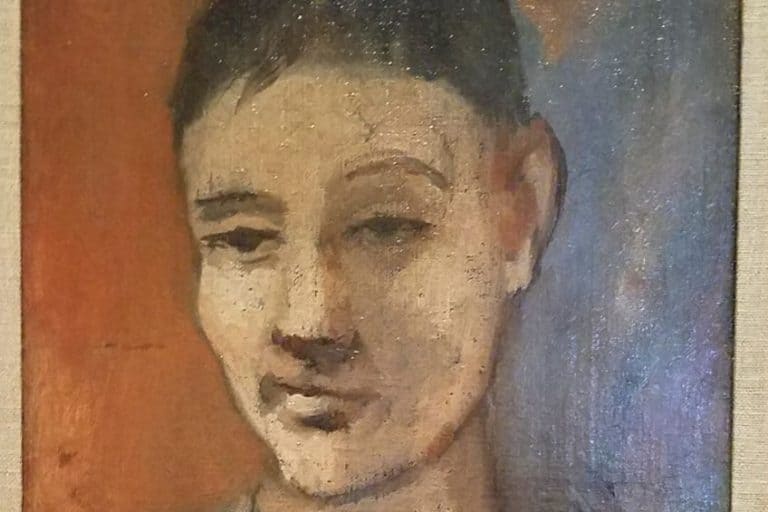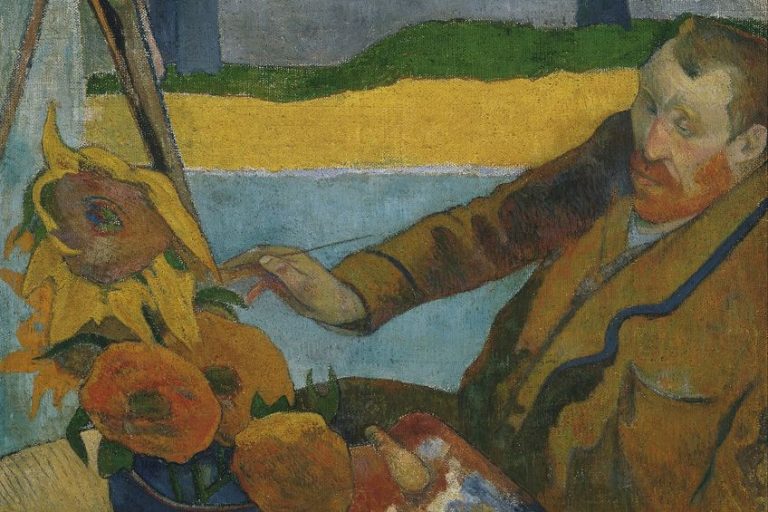Cyanotype Art – Unveiling the Timeless Beauty of Blue Prints
Welcome to the enchanting world of cyanotype art, where chemistry meets creativity to produce mesmerizing blue-hued masterpieces! Originating in the 19th century as a photographic printing process, cyanotype has transcended its utilitarian roots to become a beloved medium for contemporary artists seeking to blend nostalgia with innovation. With its striking azure tones and whimsical aesthetic, cyanotype invites us to explore the intersection of science and art, where sunlight becomes the brushstroke and imagination the canvas. Join us on a journey through the ethereal realms of cyanotype, where the ordinary transforms into the extraordinary with every brush of light and shadow!
Table of Contents
- 1 Key Takeaways
- 2 What Is Cyanotype?
- 3 History of Cyanotype
- 4 The Cyanotype Process
- 5 Material and Equipment
- 6 Cyanotype Art Techniques
- 7 Creative Potentials and Applications
- 8 Cyanotype Artists and Innovators
- 9 Technical Advancements and Variations
- 10 Impact and Significance
- 11 Representation and Symbolism
- 12 Frequently Asked Questions
Key Takeaways
- Cyanotype art, characterized by its blue hues, is crafted through a historical photographic process.
- Exposure to UV light incites reactions in treated paper to solidify cyanotype images.
- This art form is renowned for its ease and has been embraced across various levels of artistic endeavors.
What Is Cyanotype?
Cyanotype art is an archaic photographic printing process that produces a cyan-blue print. This technique was discovered in 1842 by Sir John Herschel, a polymath who contributed to the fields of astronomy, mathematics, and photography. Known for its signature Prussian blue color, the cyanotype process involves photosensitive paper that is infused with a concoction of iron salts. When exposed to ultraviolet light—a spectrum that includes sunlight—a chemical reaction occurs, leading to the creation of the artwork.
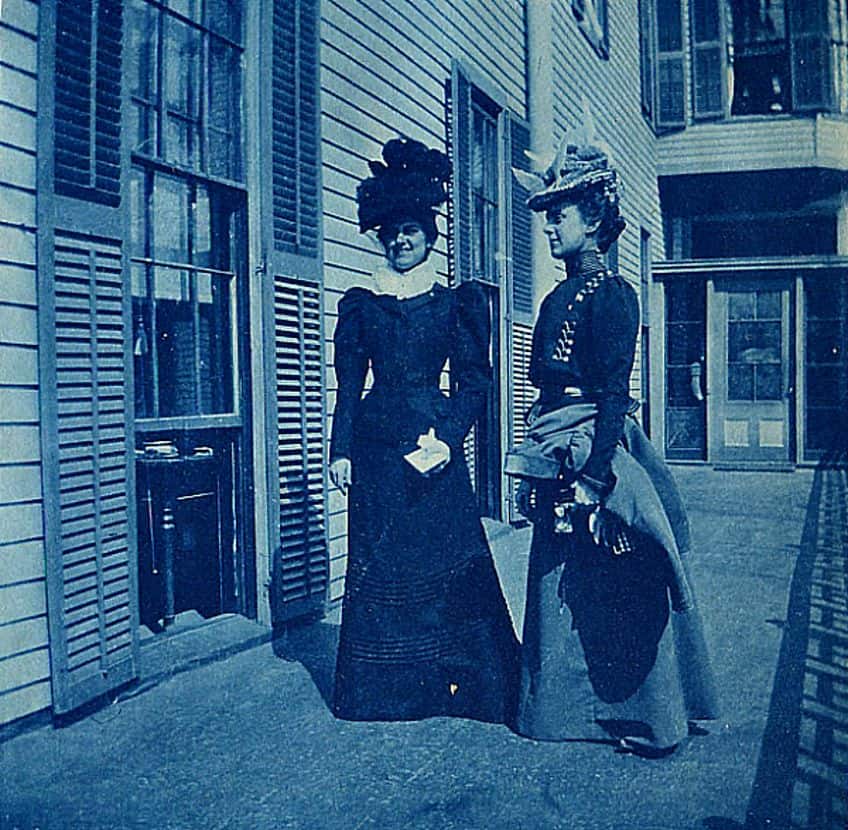
The simplicity and accessibility of cyanotype have attracted artists and photographers for its unique aesthetic and the hands-on experience it offers. The alchemy of light and chemistry transforms a mixture of common compounds into lasting blue images. Various subjects ranging from botanical specimens to modern abstract patterns have been immortalized using this method. Cyanotype’s relatively simple process and minimal equipment requirements have kept it as a favorite among educators, hobbyists, and professional artists looking to explore the relationship between photographic imaging and art. The cyanotype process is cherished for its simplicity and cost-effectiveness, making it a favored technique amongst artists and educators.
Its unique aesthetic continues to inspire modern practitioners who explore the medium’s potential through various creative applications.
History of Cyanotype
The cyanotype process, notable for its characteristic blue prints, was a significant development in the early history of photography and has been embraced by both scientists and artists for its simplicity and distinctive aesthetic.

Development by Sir John Herschel
Sir John Herschel, a prominent astronomer and scientist, pioneered the cyanotype process in 1842. This method involved the use of two chemicals: ferric ammonium citrate and potassium ferricyanide. When these chemicals are combined and exposed to ultraviolet light, they produce a stable pigment known as Prussian blue.
Herschel’s discovery was initially intended to reproduce notes and diagrams, leading it to be known as the “blueprint” in engineering and architecture.
Anna Atkins and the First Book
Shortly after Herschel’s discovery, Anna Atkins, recognized as the first person to create a photographically illustrated book, adopted the cyanotype process for scientific documentation. In 1843, Atkins produced the book “Photographs of British Algae: Cyanotype Impressions”, which offered a detailed visual record of algae specimens and is considered the first book of its kind. As a botanist and an early female photographer, Atkins’ work was pivotal in using photography as a tool for scientific investigation, while also pushing the boundaries for women in both art and science.

Evolution in Art and Science
Beyond its scientific application, cyanotype has been utilized by artists and amateurs due to its relatively simple process and unique aesthetic. It requires no camera; objects or negatives are placed directly onto sensitized paper, which is then exposed to light. The result is a rich blue image with varying tones that can range from ethereal to strikingly vivid.
Over time, cyanotype has continued to evolve, finding a place in modern art and craft practices while still being celebrated for its historical roots and contributions to both the arts and sciences.
The Cyanotype Process
The cyanotype process is a method of photographic printing that yields a cyan-blue image. With its unique results and simple methodology, it has been a favored artistic process since the 19th century.
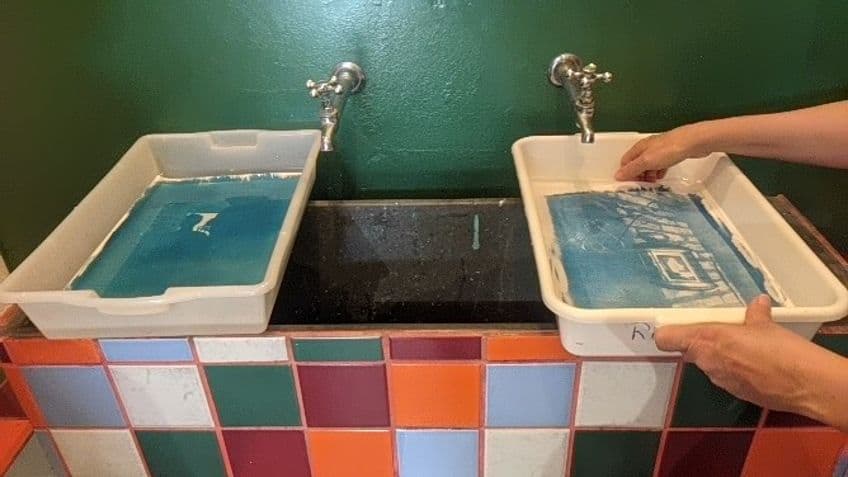
Chemical Components
Potassium Ferricyanide and Ferric Ammonium Citrate are the two primary chemicals used in the cyanotype process. These are typically mixed in equal parts to form a light-sensitive solution.
- Potassium Ferricyanide: It reacts to UV light and helps in color formation.
- Ferric Ammonium Citrate: It acts as a photosensitizer.
Creating the Cyanotype
To create a cyanotype, one must prepare paper or fabric by coating it with the solution of potassium ferricyanide and ferric ammonium citrate. The surface must be coated evenly and then dried in a dark place.
This is to prevent any premature exposure to UV light.
Exposure to UV Light
After the coated paper or fabric dries, it is exposed to UV light. This often involves placing objects or a negative on the surface to create an image. Exposure times are as follows:
- Bright sunlight: May require about 5-20 minutes.
- UV lamp: Exposure times vary depending on the strength of the light source.
Washing and Drying
In the final act of the cyanotype process, the print is gently rinsed in water, a ritual that unveils the signature cyan-blue hues characteristic of this mesmerizing art form. As the water cascades over the surface, it carries away the remnants of unreacted chemicals, unveiling the ethereal beauty beneath. With each rinse, the colors deepen and clarify until the water runs clear, leaving behind a masterpiece bathed in the radiant glow of cyanotype’s enchanting allure.
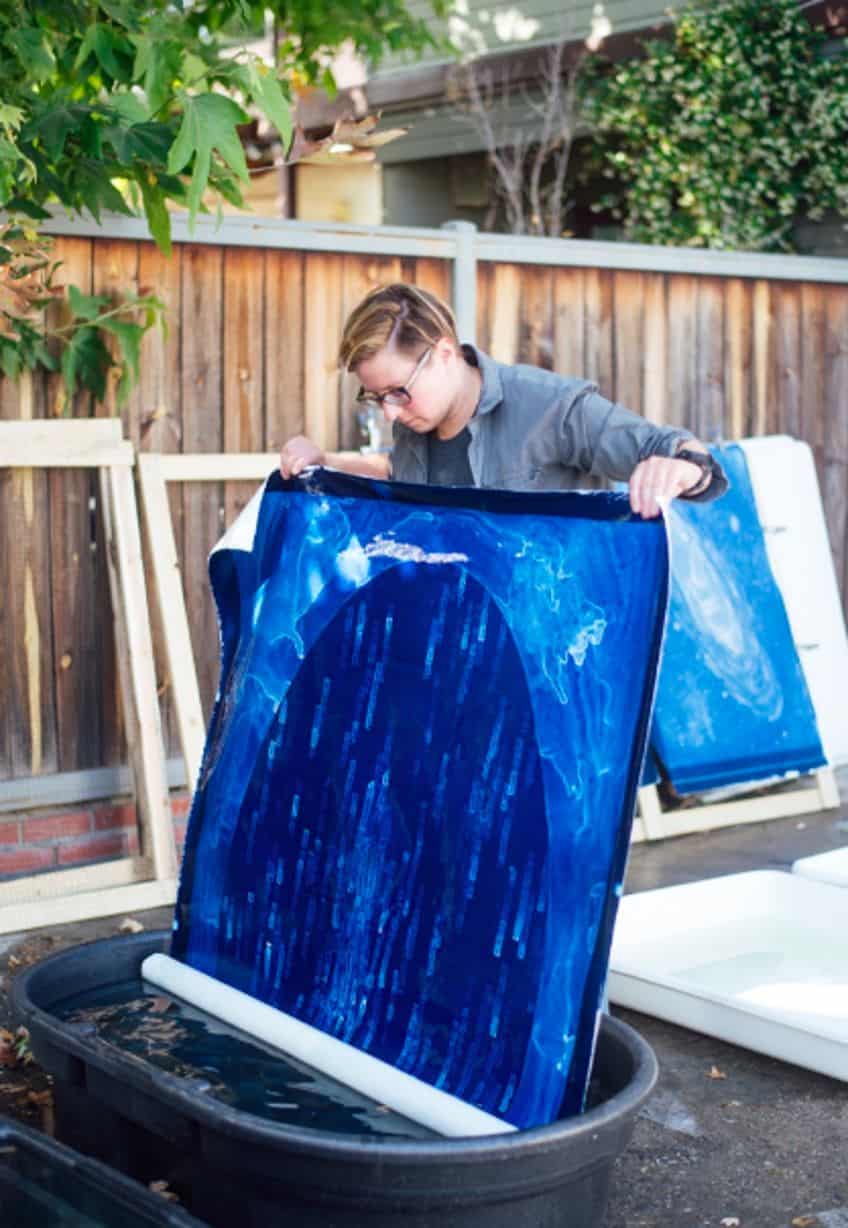
Toning and Finishing
To alter the final image’s tone or to increase stability, additional steps may be taken post-process, such as toning or rinsing in different solutions, like diluted hydrogen peroxide. Some common toners include tea, coffee, and wine. After toning, the cyanotype must be thoroughly rinsed and dried. Once dry, the cyanotype is complete, showcasing its rich, characteristic blue color.
Material and Equipment
In the creation of cyanotype art, one needs specific materials and equipment to successfully prepare and develop prints. This process involves a light-sensitive substrate, typically paper or fabric, and exposure to a UV light source, such as sunlight, to initiate the chemical reaction necessary for image development.

Selecting Paper and Fabric
For cyanotype prints, artists should select a light-colored, natural fiber material. Paper for cyanotype printing must be high-quality, with a smooth surface to evenly absorb the cyanotype solution. Fabrics should be natural fibers like cotton, linen, or silk to ensure proper absorption of the iron salts.
- Paper: 100% cotton rag watercolor or printmaking paper
- Fabric: White or light-colored cotton, linen, or silk
Preparing the Substrate
Preparation involves coating the substrate with a specific solution containing iron salts. Artists mix equal parts of ferric ammonium citrate and potassium ferricyanide, which react when exposed to UV light. The cyanotype solution comprises 8 grams of ferric ammonium citrate, 20 grams of potassium ferricyanide (Red prusside), and 200 ml of water. This precise concoction forms the foundation of cyanotype art, where light and chemistry intertwine to produce captivating cyan-blue wonders, inviting artists to explore the limitless possibilities of this enchanting medium.
In terms of application, brush it evenly or dip the solution to cover the chosen material entirely.
UV Light Sources
A strong UV light source is necessary for the chemical reaction to occur in cyanotype printing. This can be as simple as using sunlight on a clear day, ensuring exposure times vary from minutes to hours depending on the intensity of the sun. Different light sources will affect the time required for the print to develop, and experimentation can lead to varied artistic results.
- Sunlight: Preferred; exposure times may vary
- UV lamps: Consistent alternative, but with controlled timing
Cyanotype Art Techniques
Cyanotype is a photographic printing process that produces a cyan-blue print. Artists embrace this method for its simplicity and distinct prismatic blue hue that characterizes cyanotype art. Techniques vary, from creating shadowy photograms to employing negatives for detailed prints, and even integrating these prints with various media for mixed compositions.

Photograms
For photograms, an artist places objects directly onto coated paper or fabric. Common items include leaves, botanicals, or even glass. Upon exposure to sunlight or UV light, the areas not covered by these objects remain unexposed and washed out to reveal the iconic blue of cyanotypes, while the covered areas stay white or clear, creating an image marked by striking contrast.
This method plays with the positive and negative space, giving rise to unique silhouettes and shapes.
Negatives and Positives
In creating negatives and positives, an artist uses a negative, or a transparent image that light can pass through, placed over the light-sensitive material. The result is a highly detailed print that resembles a conventional photograph but with the trademark blue coloration of the cyanotype. Cyanotype photographs produced from negatives facilitate a rich gradation of tones, offering a broader range of expression from subtle whispers of blue to deep, saturated hues.

Mixed Media and Collage
Finally, Mixed Media and Collage techniques involve blending cyanotype prints with other artistic elements, such as paint or additional paper layers. Artists often layer cyanotype images with various materials or incorporate the cyanotype process into their other artworks, creating rich, textural pieces. These mixed media works may include materials like sand or paint to introduce different textures or colors.
This expands the dynamic range of the artwork beyond the cyanotype’s prismatic blue.
Creative Potentials and Applications
Cyanotype art has significantly expanded beyond its original scientific and technical roots, now encompassing a diverse spectrum of creative potentials and applications across various fields.
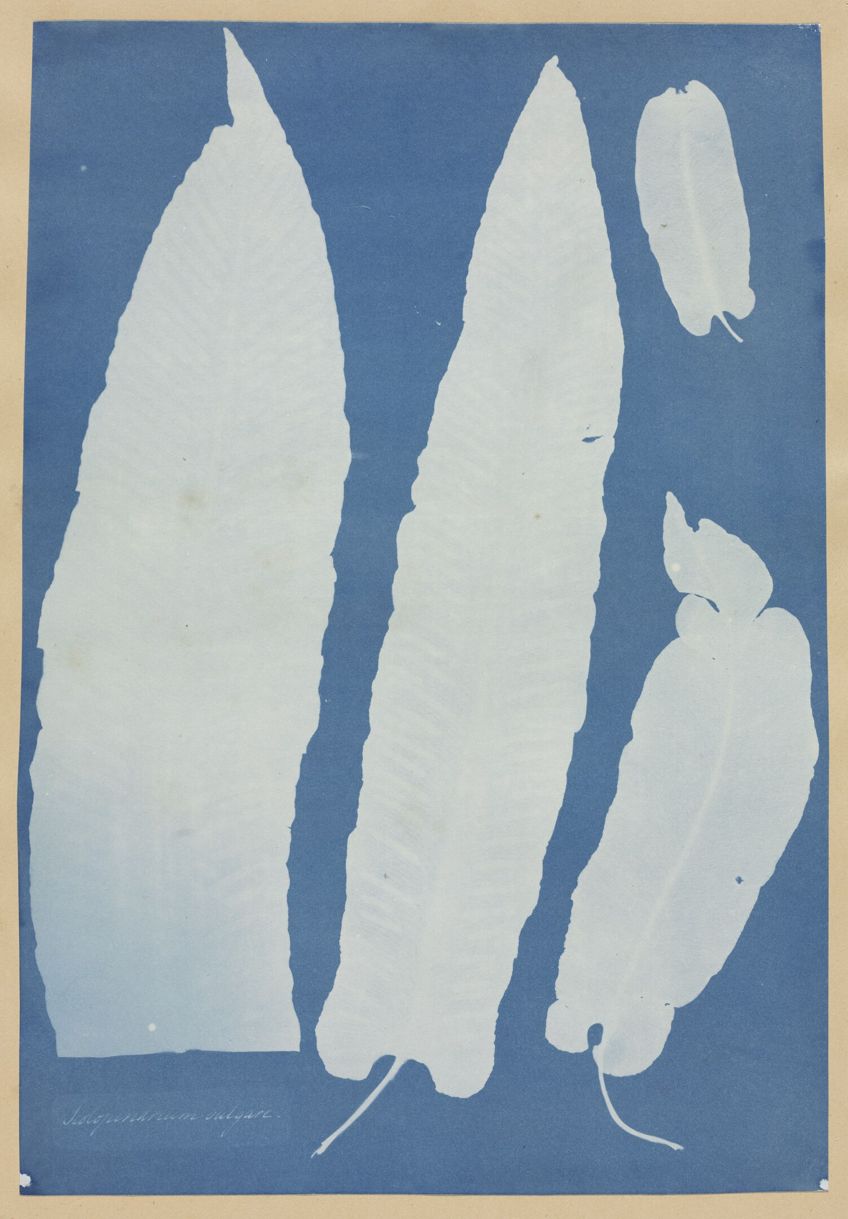
Contemporary Artists and Projects
Contemporary artists are embracing cyanotype for its unique aesthetic and process, curating projects that range from printmaking to three-dimensional works. Ferric ammonium oxalate, a light-sensitive chemical, is often used to coat materials for cyanotype photography. Artists utilize this method to produce works with a distinctive blue hue, infusing traditional subjects with modern interpretations.
While some focus on botanical specimens to create intricate scientific illustrations, others explore abstract forms and subject matter, often presenting thought-provoking narratives and themes through their art.
Scientific and Educational Uses
Cyanotype’s precise and reproducible nature has made it a valuable tool for scientific and educational uses. The clarity and stability of cyanotype prints have been employed in scientific illustration, enhancing the visual communication in teaching and research. Additionally, botanical specimens are often captured using this method, both for their aesthetic value and for educational purposes, providing a bridge between art and science.

Architectural and Design Access
Traditionally, cyanotypes served as a practical method for reproducing architectural blueprints due to their simplicity and cost-effectiveness. Designers and architects still utilize modified cyanotype processes to produce detailed prints of drawings. While the term “blueprint” has come to be synonymous with architectural plans, today’s usage of cyanotype in design goes further. It is now used not only for practical reproductions but also integrated into design aesthetics, providing a hands-on approach that appeals to both designers and those interested in the tactile nature of printmaking and painting.
Objects can also be placed onto the sensitized surface, creating three-dimensional shadows that capture the interplay of light and material, offering endless exploration for artistic expression.
Cyanotype Artists and Innovators
The field of cyanotype art is rich with history and innovation. From its early pioneers to contemporary artists, cyanotype has been a medium of expression and experimentation.

Pioneers in Cyanotype
Anna Atkins is often celebrated as the first person to publish a book illustrated with photographic images. Her pioneering work in cyanotyping botany set a precedent for photographic art. Additionally, John Herschel invented the cyanotype process in 1842, contributing vastly to both science and the arts.
Modern Practitioners
Susan Derges specializes in camera-less photographic techniques including cyanotypes. Her work often reflects themes of landscape and the natural world. Meghann Riepenhoff is a contemporary artist whose work with cyanotypes engages directly with the environment.
She uses elements like rain and ocean waves in her process.
Emerging Trends in Cyanotype Art
In the wake of the pandemic, artists in places like Washington have used cyanotype to express themes of isolation and the human figure existing within or as a void. This indicates a trend towards using cyanotype to explore deeper human experiences and the intrinsic connection to nature.
Technical Advancements and Variations
In the realm of cyanotype art, significant advancements have led to the development of new techniques and variations beyond the traditional approach. These adaptations have expanded the artistic potential and application of cyanotype.
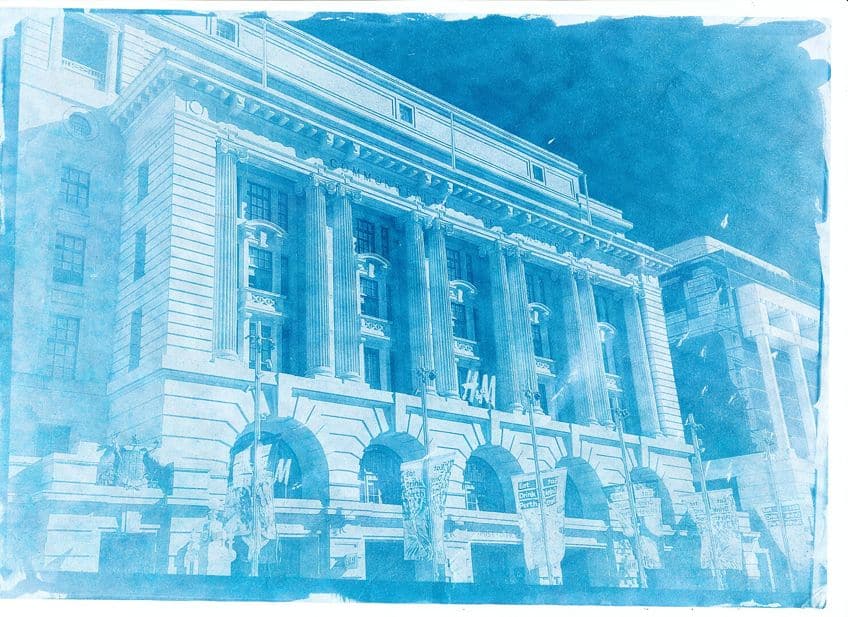
Alternatives to Traditional Cyanotype
The traditional cyanotype process, a camera-less technique involving ferric ammonium citrate and potassium ferricyanide, is well-established. However, Mike Ware’s ‘New Cyanotype’ process has modernized the practice using a mixture of ferric ammonium citrate and a different iron compound, ferric ferrocyanide, resulting in a quicker and more controllable reaction that offers deeper, more intense blues and shorter exposure times.
Artists are experimenting with this method, exploring its versatility on various surfaces and textures.
Three-Dimensional Cyanotyping
Cyanotype’s evolution extends into three-dimensional spaces, challenging the misconception that it’s only suited for flat surfaces. By coating objects with cyanotype chemicals, artists create contact prints on three-dimensional surfaces, achieving intricate, sculptural art pieces that juxtapose the ethereal blue with the tactility of physical forms. This exploration has broadened cyanotype’s scope from two-dimensional prints to encompass voluminous works.
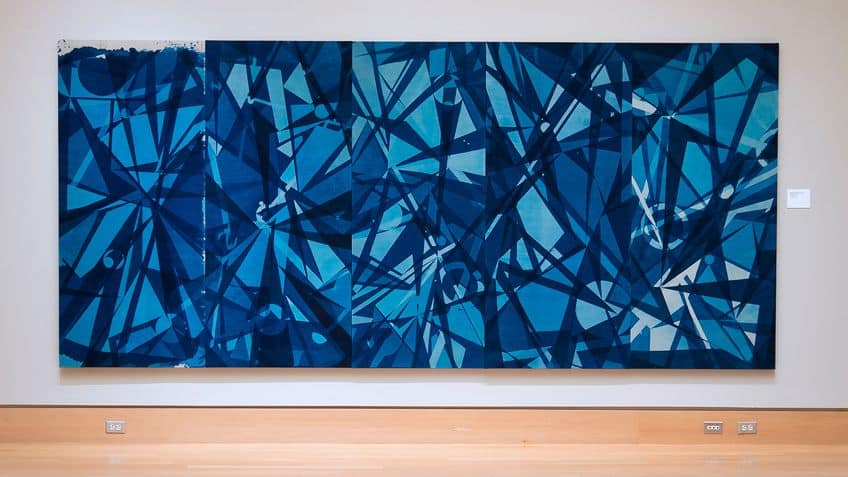
Cyanotype in the Digital Age
Digital technology has infused new potential into cyanotyping. It allows the creation of negatives via digital software which are then printed onto transparencies and used in the traditional cyanotype process. This blend of digital precision with analog methods enables unprecedented control over the final image, producing intricate photographic prints that merge the digital and physical worlds.
The adoption of digital tools has increased the accessibility and adaptability of cyanotype, ensuring its relevance in contemporary art practices.
Impact and Significance
Cyanotype, a photographic printing process recognized for its rich blue color, has made a lasting impact on both art and photography. Its significance is tied to its unique aesthetic, accessibility, and its role in documenting botanical and artistic heritage.
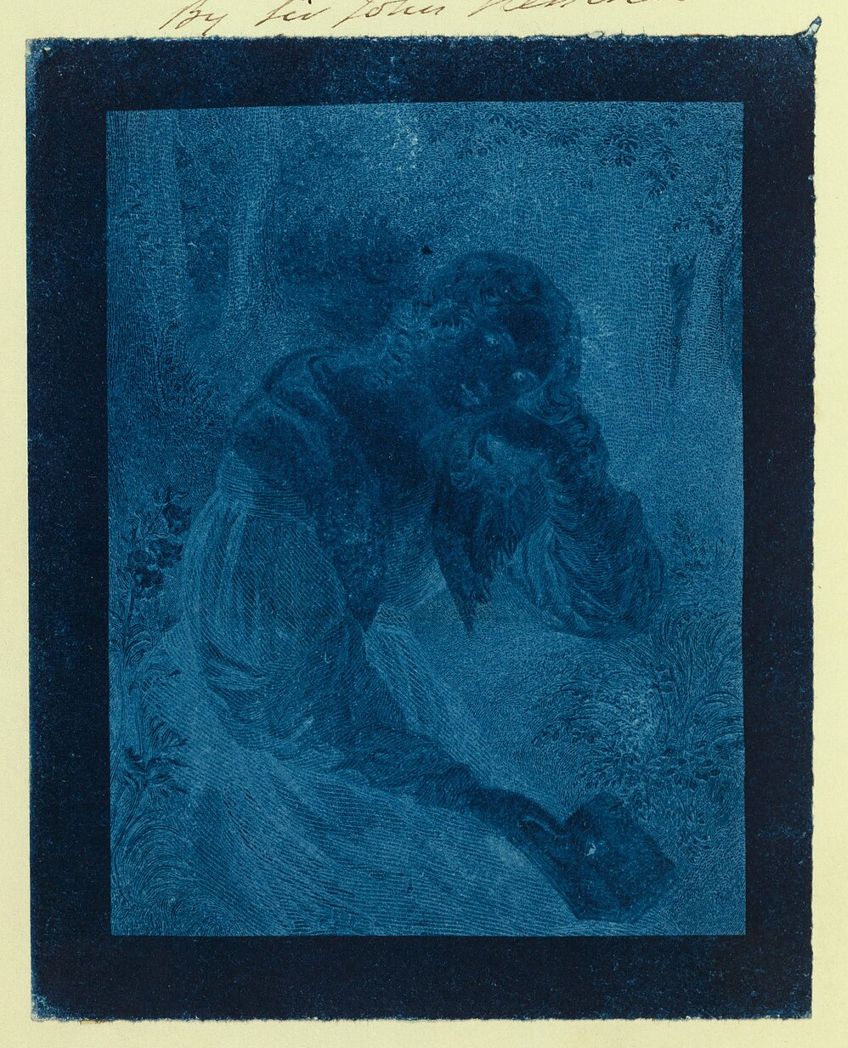
Influence in Art and Photography
Cyanotype has woven its way through the fabric of art and photography by offering a distinct visual vocabulary. Renowned artists, including Anna Atkins—who is recognized as the first female photographer—leveraged this technique to create photograms of plant life that resonate with both scientific and artistic communities.
These cyanotype photographs meld the precision of science with the expressiveness of art, showcasing a reverence for detail that continues to inspire contemporary artists and photographers.
Cyanotype as a Learning Tool
In educational settings, cyanotype serves as an effective learning tool due to its simplicity and minimal need for equipment. The process introduces students to fundamental photographic principles, such as the effect of light exposure on photosensitive materials. Art and photography educators often integrate cyanotype projects into their curriculum to teach about the history of photography and chemical processes, fostering a hands-on appreciation for traditional photographic techniques.

Cultural and Historical Value
The cultural and historical value of the cyanotype is deeply linked to its heritage. Its application extends beyond artistic expression; it was instrumental in the creation of architectural blueprints and played a pivotal role in the dissemination of scientific knowledge. Through archival cyanotype photographs and photograms, generations are offered a glimpse into the past, allowing them to connect with a time when manual photo processing was not only an art form but a critical method of documentation and communication.
These historical artifacts, often kept in museums and collections, continue to be instruments of learning and preservation.
Representation and Symbolism
In the realm of cyanotype art, color, and medium converge to embody rich layers of symbolism and contemporary resonance. Blue, particularly the distinctive Prussian blue of cyanotypes, carries historical and emotional weight, while the art’s presence in modern culture reflects a dynamic relationship between past and present.
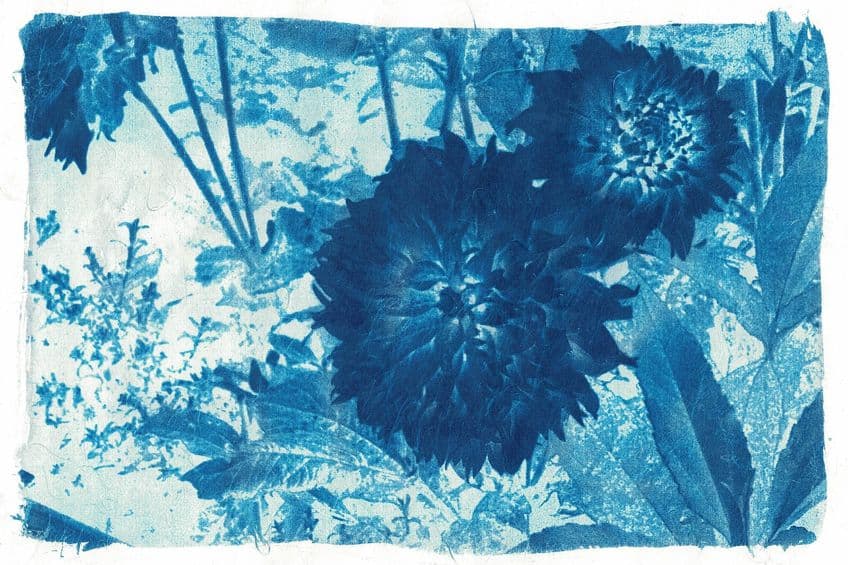
Symbolic Meaning of Blue
Blue in cyanotype art symbolizes calmness, introspection, and boundless possibilities. It embodies the serenity of the sky and the depth of the ocean, inviting viewers to explore the mysteries of the subconscious mind.
Through its ethereal beauty, blue speaks of resilience, solitude embraced, and the timeless quest for understanding in a world colored by wonder and longing.
- Prussian Blue: Central to cyanotype art, Prussian blue is not merely a color but a symbol. It represents depth and stability, often associated with knowledge and tranquility in Western culture. Prussian blue’s introduction in the 18th century marked a significant development in the art world, as it became the first synthetically produced color pigment.
- Blueprints: Originally used in the 19th century for reproducing architectural plans, the so-called blueprints derived from the cyanotype process symbolize the groundwork and planning stages of design.
Cyanotype in Contemporary Culture
Cyanotype art has seen a revival in contemporary culture, captivating artists with its nostalgic charm and experimental appeal. Amidst a digital age, cyanotype offers a tactile return to handmade art, exploring themes from environmentalism to memory. Through exhibitions and online platforms, it bridges tradition and innovation, symbolizing creativity and resilience in today’s cultural landscape.
- Photography and art: Cyanotypes have evolved from a technical tool to a contemporary art form. Artists now explore the unique aesthetic of cyanotypes to express themes of memory, identity, and nature. They are valued for their handcrafted nature in an era dominated by digital imagery.
- Cultural presence: The technique has witnessed a resurgence in contemporary culture, with artists and hobbyists alike embracing the method for its simplicity and the evocative quality of the rich blue it produces. Cyanotype art serves as a touchstone for conversations about the origins of photography and its place in the broader narrative of art history.
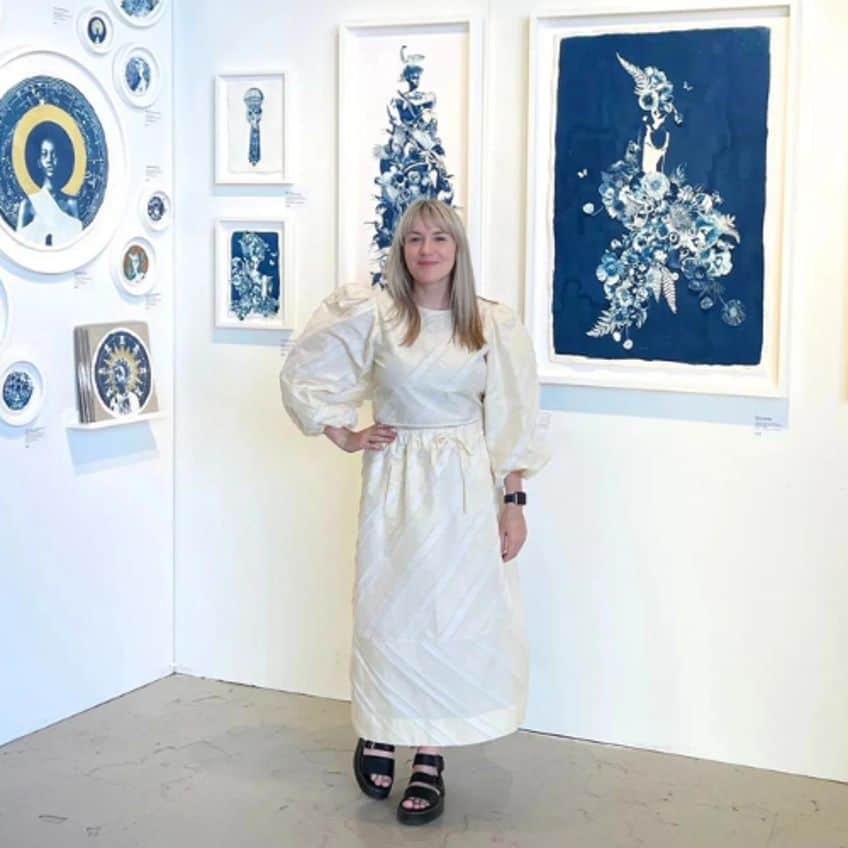
As we bid adieu to the captivating world of cyanotype art, one cannot help but marvel at its timeless allure and boundless potential for creative expression. From its humble beginnings as a photographic technique to its contemporary resurgence in the hands of modern artists, cyanotype continues to enchant and inspire with its ethereal beauty and poetic simplicity. As we embrace the endless possibilities of this enchanting medium, let us remember that within the delicate dance of light and chemistry lies a universe of imagination waiting to be explored. So, let your creativity soar, and may the vibrant shades of cyanotype forever paint the canvas of your dreams!
Frequently Asked Questions
What Materials Do You Need to Create a Cyanotype Print?
To create a cyanotype print, one needs a mixture of two chemicals: Potassium Ferricyanide and Ammonium Ferric Citrate, which are mixed in equal parts. This solution is then applied to a suitable surface, such as heavyweight cartridge paper. The process also requires a UV light source, typically sunlight, to develop the print. Subsequently, the print is rinsed in water, which reveals the distinctive cyan-blue image.
Who Are Some Well-Known Artists in the Field of Cyanotype Art?
Anna Atkins is historically significant in the field of cyanotype art for her botanical illustrations, which are considered among the first uses of the process for creating images. Contemporary artists like Meghann Riepenhoff have been recognized for their innovative work, pushing the boundaries of the medium and integrating it with environmental elements.
Can Cyanotype Artworks Be Produced With a DIY Approach at Home?
Yes, cyanotype is conducive to a do-it-yourself approach and is popular among hobbyists due to its relatively simple process and non-toxic nature. Kits are available that include pre-measured chemicals and instructions, allowing enthusiasts to achieve professional results with custom designs from the comfort of their own homes. They typically come with everything needed to begin making prints, including paper specially prepared for the cyanotype process.
Isabella studied at the University of Cape Town in South Africa and graduated with a Bachelor of Arts majoring in English Literature & Language and Psychology. Throughout her undergraduate years, she took Art History as an additional subject and absolutely loved it. Building on from her art history knowledge that began in high school, art has always been a particular area of fascination for her. From learning about artworks previously unknown to her, or sharpening her existing understanding of specific works, the ability to continue learning within this interesting sphere excites her greatly.
Her focal points of interest in art history encompass profiling specific artists and art movements, as it is these areas where she is able to really dig deep into the rich narrative of the art world. Additionally, she particularly enjoys exploring the different artistic styles of the 20th century, as well as the important impact that female artists have had on the development of art history.
Learn more about Isabella Meyer and the Art in Context Team.
Cite this Article
Isabella, Meyer, “Cyanotype Art – Unveiling the Timeless Beauty of Blue Prints.” Art in Context. February 27, 2024. URL: https://artincontext.org/cyanotype-art/
Meyer, I. (2024, 27 February). Cyanotype Art – Unveiling the Timeless Beauty of Blue Prints. Art in Context. https://artincontext.org/cyanotype-art/
Meyer, Isabella. “Cyanotype Art – Unveiling the Timeless Beauty of Blue Prints.” Art in Context, February 27, 2024. https://artincontext.org/cyanotype-art/.




